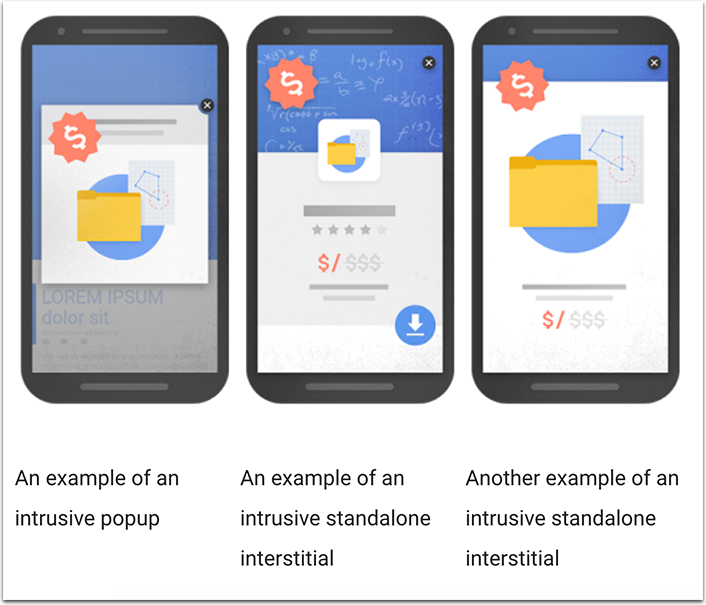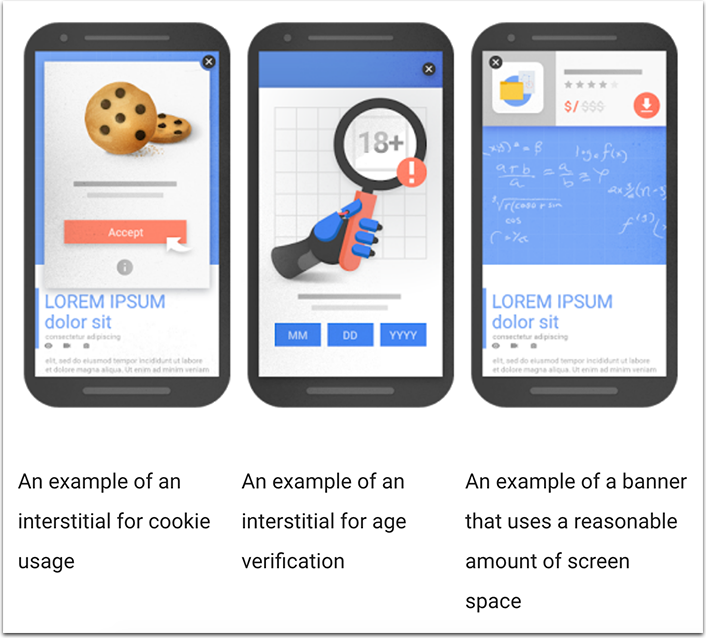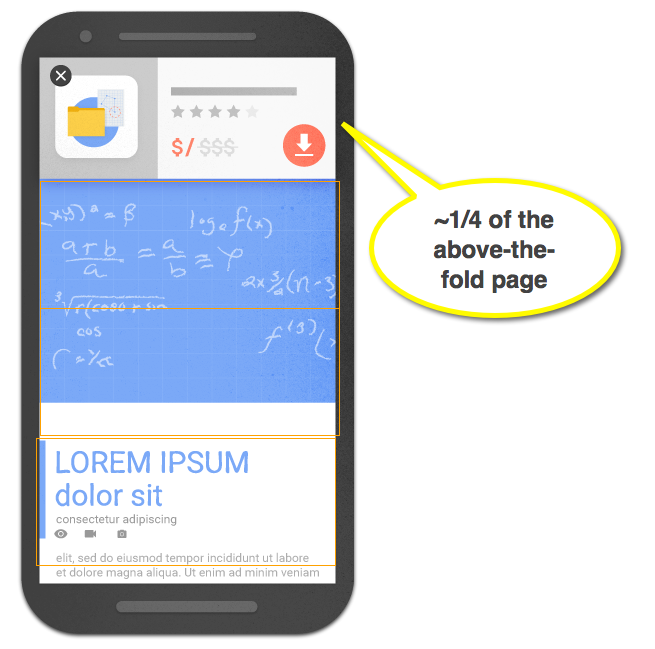A couple of weeks ago, Google has announced that exactly on January, 10, it will hit pages with “intrusive interstitials”. What does it mean? Let’s find out!
What are interstitials?
Interstitials are the web pages that show up before or after expected content page, usually as a popup or full-screen ad. They usually display ads or optin forms. Interstitials are considered a form of interruption marketing.
Which search results will be effected?
The update will affect mobile search results which are getting increasingly important.
Which popups will be affected?
As Google defines interstitial ads,
Interstitial ads are full screen ads that cover the interface of their host application.
However the update is announced to affect more types of interstitials:
- Popups covering the main content, either immediately after the user navigates to a page from the search results, or while they are looking through the page.
- Standalone interstitial that the user has to dismiss before accessing the main content.
- Layout where the above-the-fold portion of the page appears similar to a standalone interstitial, but the original content has been inlined underneath the fold.

Which popups won’t be affected?
Generally, an interstitials that have a good reason to be there, as well as those that are easy to dismiss
- Interstitials that appear to be in response to a legal obligation (Examples: cookie usage or for age verification)
- Login dialogs on sites where content is not publicly indexable. (Examples: private content such as email or unindexable content that is behind a paywall)
- Banners that use a reasonable amount of screen space and are easily dismissible.

I seem to have obtrusive interstitials on my site and they work GREAT for my conversion rate. What should I do?
Don’t forget that this update effects only mobile search results. So if you are really worried about your CTR and don’t want to part with your interstitials, one possible workaround is to disable them for mobile devices or use different sign-up forms for mobile experience.
Another way is to experiment with different ways to design your optin forms or calls-to-action. For example, HelloBar offers an easy to put your optin form across the screen without it taking too much space.

Remember, Google mostly cares about the user’s immediate experience. This update will affect pages users navigate to directly from Google search results (and generally pages users land on from external sources, like Google Plus, for example). Whatever you do with those users after that is your business, so if they navigate further into the site, you can serve them more ads.
It will not touch vignette ads which appear when users navigate between pages on the same website, so you can keep your ads there. So in your optin form settings, add a rule to never show it on pages users land from external sources.
The good thing is, the update is scheduled for January, so you have time to experiment with different ways to design your calls-to-action to avoid suffering lower conversions.
Whatever you do, don’t forget to test your site on mobile devices as well as desktop to ensure your new forms look good. Remember, that is exactly how much mobile screen real estate Google allows to cover with an interstitial:

The post How to Get Prepared for Google’s “Intrusive Interstitials” Update appeared first on Internet Marketing Ninjas Blog.
